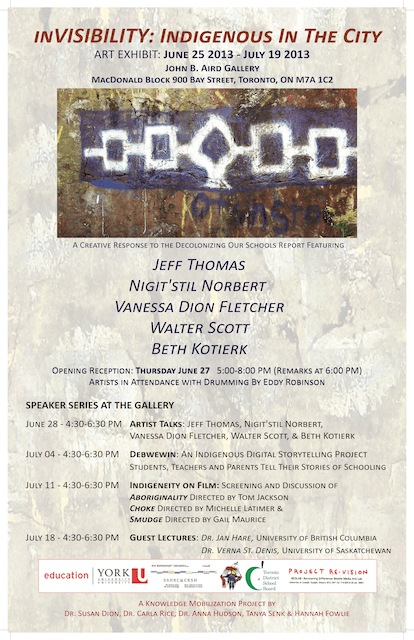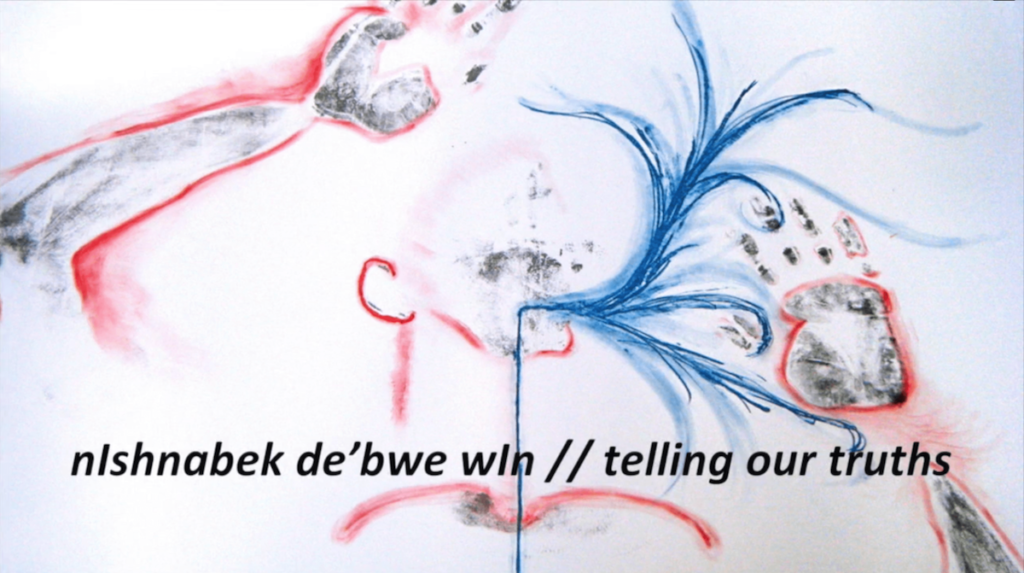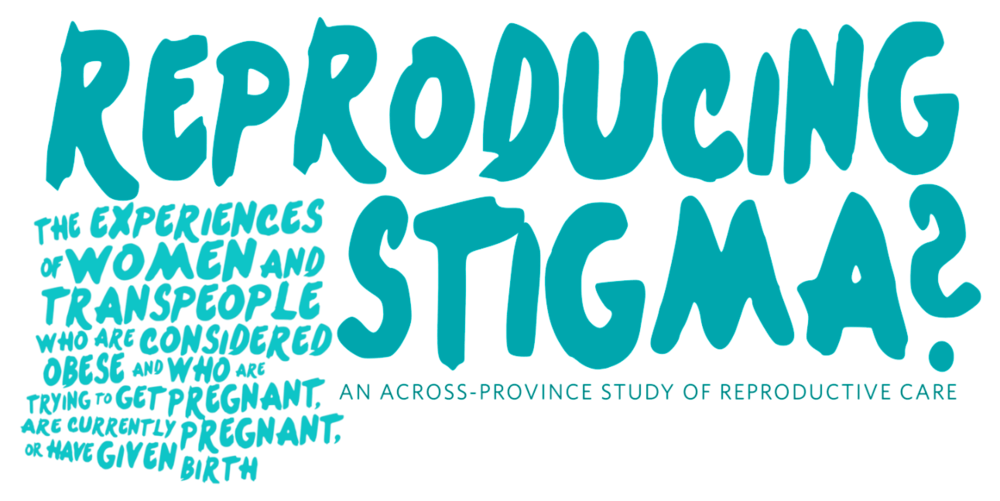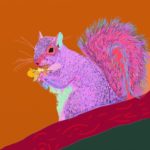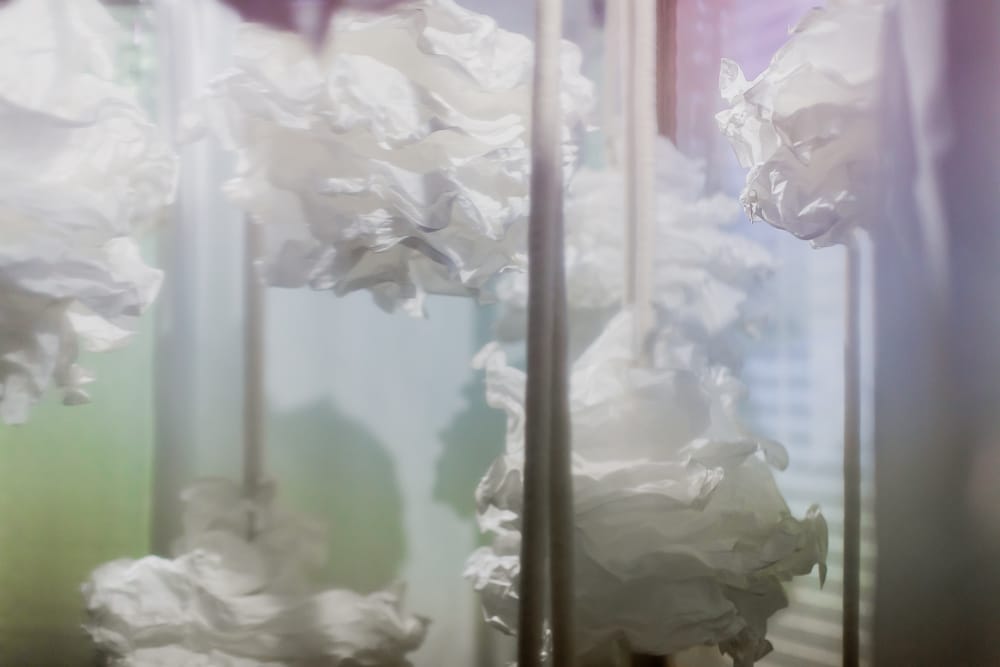
How Stories Travel
Stories travel in many, often complex, ways. The ways stories move us at screenings, for example, can be hard to describe or quantify. Stories also move us as we make them and move us when we share them with friends, family, or others.
More concretely, storytellers often decide to share their stories on social media channels or at private screenings with friends and family.
Stories can also be shared through various research avenues: at conferences, in publications, for students, and in policy briefings.
The stories from the inVISIBILITY: Indigenous in the City project were featured at our Provincial Legislature where senior Ministry of Education policy makers and politicians viewed them alongside the works of contemporary Indigenous artists during the inVISIBILITY: Indigenous in the City Art Exhibition and Speaker Series.
The overarching theme of this exhibition was Indigenous perspectives on urban Indigeneity and schooling.
The stories from inVISIBILITY and its partner project, nishnabek de ‘bwe win//telling our truths, have been presented with permission from the creators at national and international conferences and professional development sessions for educators.
In this way, the stories provided a powerful way to move the conversation around representation of Indigenous stories and perspectives in the public school system, and to intervene in social justice conversations around the persisting inequities and misrepresentations baked into our education systems.
For another Re•Vision project, Mobilizing New Meanings of Difference and Disability, stories were screened with administrators/medical staff of major teaching hospitals in Ontario, catching the attention of the Ontario Arts Council leading to the hiring of Dr. Eliza Chandler (whose story appears in an earlier module) to conduct a study that informed the establishment of a disability arts funding stream at the Ontario Arts Council.
The stories and some of the storytellers from the Reproducing Stigma storytelling project travelled to Western U Medical School to engage in conversation about weight stigma in maternal medicine with obstetrics and gynecology residents and professors.
Final Thoughts
Re•Vision’s methodology involves an open-ended and malleable approach that welcomes disruption and transformation. Though at its heart, the method—with its emphasis on story and social justice—has remained intact, the methodology has moved substantively and continues to change in surprising ways along with the context, community, and issues under investigation.
Certain core ethical principles stay the same: Re•Vision takes on projects that address pressing social problems; approach these using a social justice lens and recognize that all accounts, whether written, told, or imagined are partial truths and that the truths of aggrieved groups must be shared to create a more just society.
Storytelling connects people’s lived realities with the structural conditions in which they are immersed and centers the creativity and agency of members of justice seeking groups (Rice & Mündel, 2018, pp. 218-219).
Reference: Rice, C., & Mündel, I. (2018). Story-making as methodology: Disrupting dominant stories through multimedia storytelling. Canadian Review of Sociology, 55(2): 211-231. https://doi.org/10.1111/cars.12190

